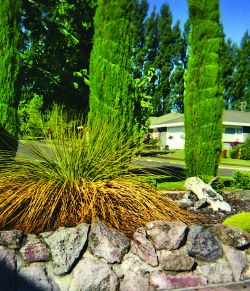Plant
Doctor Archive
Grass
tree browning
  WE
grew some Xanthorrhoea from certified seed in 1992. We started
with 10 seeds, three germinated and only two survived. When we moved
house in 1997 we took the plants with us. They've both done well
until this year when one seems to be dying. Can you give us any
advice? WE
grew some Xanthorrhoea from certified seed in 1992. We started
with 10 seeds, three germinated and only two survived. When we moved
house in 1997 we took the plants with us. They've both done well
until this year when one seems to be dying. Can you give us any
advice?
 THESE
Aussie natives, often called grass trees, are very slow growing
and can live to a ripe old age. In their native habitat they often
get burned in bush fires. This cleans off all the foliage, leaving
the trunks black and exposed to the elements. But they soon sprout
new growth from the top and seem none the worse for the experience.
They grow best in relatively warm, dry conditions and need free-draining
soil. THESE
Aussie natives, often called grass trees, are very slow growing
and can live to a ripe old age. In their native habitat they often
get burned in bush fires. This cleans off all the foliage, leaving
the trunks black and exposed to the elements. But they soon sprout
new growth from the top and seem none the worse for the experience.
They grow best in relatively warm, dry conditions and need free-draining
soil.
In this country grass
trees are susceptible to root disease brought on by overly wet soil,
especially in winter when the soil is often both cold and wet. It
looks as if your plant with its browning lower leaves is suffering
from root rot. If the soil where it's growing does get wet at times,
you should think about improving drainage or move the grass tree
to a better spot. You could build a mound of gravel and bark and
plant it on top - they don't need fertile soil and transplant quite
well. At the same time remove all the brown leaves, cutting them
off close to the base of the plant to open it up to fresh air.
You could also try spraying
the foliage and drenching the root system with the fungicide aliette,
which is available from garden centres as No Root Rot.
Weekend
Gardener, Issue 190, 2005, Page 25
Reproduced with permission from the former Weekend Gardener magazine. The views expressed here are not necessarily those of the RNZIH.
|
 |
 |
|